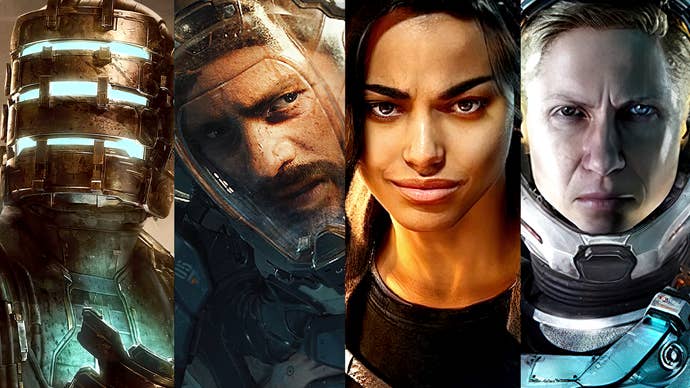Only one game addresses all of our original critiques.
How long does it take to fix a PC game?
Do they actually get fixed at all?

Of course, the truth is that the situation is different on a game by game basis.
This launched with astonishingly bad shader compilation stutter, which was quickly addressed.
However, other problems remain as they were.

This essentially makes configs optimisation impossible unless you have a photographic memory, or a capture card.
Other issues remain untouched.
Major stuttering problems traversing between different areas also remains problematic, the effect amplified with ray tracing features active.

There have been improvements, however.
This was definitely not possible at launch.
However, the core problem of the game relying on single-thread power remains.

Ultimately though, with severe reservations, The Callisto Protocol is now playable, at least.
The game still stutters incessantly when you traverse the game world, no matter how powerful your CPU.
The lack of any kind of improvement here, along with shader compilation stutter (despite pre-launch caching!)

Dead Space still feels jittery and unfinished and legitimate criticism on the game was completely ignored.
We’re sticking with people in space suits for our third re-review: Returnal.
That started with no support for FSR2, despite supporting DLSS.
XeSS, FSR2 and even DLSS 3 frame generation are all present now.
However, the XeSS and FSR2 implementations are lacking, while DLSS quality is actually worse than launch.
Running around the levels still induces frame-time spikes, just like launch - and just like PS5.
This has a profound impact on the fluidity of the game.
Traversal stutter also remains in play.
However, while this may be useful for a higher-end chip, mainstream processors don’t benefit as much.
I tested on a Ryzen 5 3600 with RTX 4070 and found that distracting stutter was still present.
No matter how long you stood in an area, the textures would remain at the same ultra-low resolution.
The good news is that the standard quality mode now looks so much better.
You’ll need a GPU with more VRAM to actually get those high or ultra high quality assets.
The setting isn’t completely useless though: it does seem to improve texture loading speed.
CPU optimisations are also implemented.
The original launch was very heavy on mainstream processors, and heavier still with ray tracing effects enabled.
There’s a circa 35 percentage point improvement here on a Ryzen 5 3600.
Beyond that, there are other things that have been improved.
Similarly, both XeSS and DLSS have lessened sparkle that occurs on specular surfaces when motion blur is on.
Lastly, the game has implemented a new screen-space ambient occlusion technique.
The new ‘standard’ option is acting like one used inFinal Fantasy 15- and it looks a lot better.
There are no performance advantages with FidelityFX and the standard option is so much better.
Forspoken is the obvious highlight in what has otherwise been a sobering experience.
Six months or so on from launch, the degree of improvement is variable.
Dead Space is much the same and remains flawed.
Returnal is better in some respects, worse in others and unchanged where it really counts.
Meanwhile, The Callisto Protocol is better, but still exhibits profound problems owing to its flawed foundation.